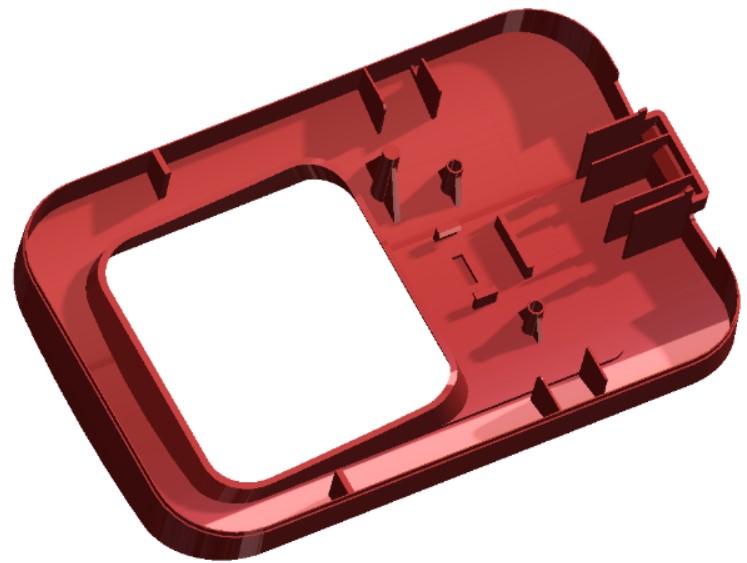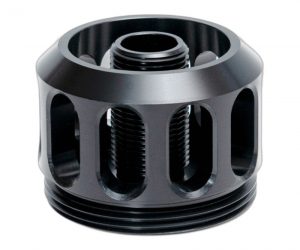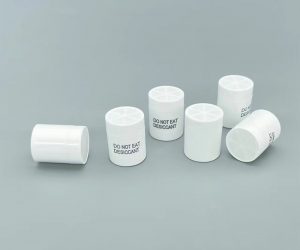The seemingly innocuous act of designing a molded plastic boss belies a labyrinthine complexity, a precarious dance between material science, manufacturing constraints, and the often-unpredictable whims of polymer flow. Optimizing boss design transcends simple guidelines; it demands a holistic understanding of the injection molding process, anticipating potential failure modes with the prescience of a seasoned oracle.
Espessura da parede: Non-uniformity, a siren song of sink marks and warpage, must be banished. Precise control, extending beyond mere uniformity to encompass a nuanced understanding of thermal gradients within the mold cavity, is paramount. Finite element analysis (FEA) becomes not a luxury, but a necessity, predicting stress concentrations and flow imbalances with unsettling accuracy.
Radii and Fillets: Generous radii are not merely desirable; they are the bulwark against stress concentration, the guardians against catastrophic failure. Their implementation must be informed by fracture mechanics, considering not only the static load but also the dynamic stresses induced during part ejection and operational use. Sharp corners, those insidious agents of destruction, must be exorcised from the design.
Draft Angles: Simple draft angles are insufficient. We must consider the interplay of surface tension, material viscosity, and mold release agents to determine the optimal angle for flawless part ejection. Failure to do so invites the specter of part breakage and costly production delays.
Ribbing: Rib design is not a mere matter of adding structural rigidity. It's a sophisticated exercise in stress distribution, requiring an intimate knowledge of the part's loading conditions and the material's elastic modulus. Improper ribbing can lead to unexpected stress concentrations, negating its intended benefit.
Gate Placement: Gate placement is not simply about avoiding weld lines; it's about orchestrating the flow of molten polymer to minimize shear stresses and prevent the formation of voids. This requires a deep understanding of the melt front's behavior and the potential for localized cooling effects.
Material Selection: Material choice transcends simple property comparisons. It requires a nuanced understanding of the material's rheological behavior under the extreme conditions of injection molding, anticipating the potential for degradation and long-term performance issues.
Undercuts and Threads: Undercuts and internal threads are not merely inconvenient; they are existential threats to the manufacturing process, demanding complex mold designs and exponentially increasing production costs. Their inclusion must be justified by compelling functional necessity, not mere aesthetic whim.
Boss Height: Boss height optimization is a delicate balancing act, a tightrope walk between sufficient strength and the avoidance of sink marks and warpage. This requires a precise understanding of the material's shrinkage characteristics and the thermal profile within the mold.
Venting: Venting is not simply about air escape; it's about controlling the pressure profile within the mold cavity, preventing the formation of voids and ensuring complete part filling. Improper venting can lead to a cascade of defects, from cosmetic blemishes to catastrophic structural failure.
Avoid Overpacking: Overpacking is not simply undesirable; it's a recipe for disaster, leading to internal stresses that can manifest as warping, cracking, and premature failure. Precise control of the injection parameters is crucial to avoid this pitfall.
Tolerances: Tolerance specification is not a simple matter of stating dimensions; it's a critical decision that impacts manufacturability, assembly, and overall part performance. A thorough understanding of the manufacturing process and the capabilities of the chosen equipment is essential.
Prototyping: Prototyping is not merely a verification step; it's an iterative process of design refinement, allowing for the early detection and correction of flaws before they escalate into costly production problems. Multiple iterations, informed by rigorous testing, are often necessary.
Consult with Mold Manufacturer: Collaboration with the mold manufacturer is not optional; it's an absolute necessity. Their expertise in mold design and manufacturing is crucial to translating the design intent into a manufacturable and cost-effective product.
The devil resides in the details, and nowhere is this more profoundly true than in the arcane art of injection mold design. A seemingly innocuous imperfection – a misplaced sprue, a suboptimal cooling channel geometry, a surface finish lacking the requisite nanoscopic precision – can unravel the entire enterprise, yielding a cascade of cascading failures. The pursuit of optimal mold design transcends mere adherence to guidelines; it demands a deep, almost mystical understanding of the interplay between material science, thermodynamics, and the capricious nature of molten polymers under duress.
Consider the polymer itself: a chaotic dance of entangled chains, each with its own idiosyncratic response to shear forces, thermal gradients, and the relentless pressure of the injection process. High-flow materials, with their seemingly docile demeanor, can betray the unwary designer with unexpected sink marks and warpage. Conversely, the seemingly intractable low-flow materials demand a strategic deployment of gates and runners, a delicate ballet of pressure and velocity profiles calculated to coax the reluctant melt into every recess of the mold cavity. Failure to achieve this delicate equilibrium results in short shots, incomplete fills, and the specter of costly rework.
The cooling system, far from being a mere afterthought, constitutes the very heartbeat of the mold. Its design is not a simple matter of drilling holes; it's a complex optimization problem, a quest for uniform temperature distribution across the mold cavity, a struggle against the insidious formation of thermal stresses that can warp the most meticulously crafted part. Moreover, the longevity of the cooling system itself is paramount; corrosion, fouling, and the insidious creep of fatigue can render even the most elegant design obsolete.
The clamping system, often overlooked, is the silent guardian, ensuring the integrity of the mold under the immense forces exerted during injection. Its design must be a testament to structural mechanics, a bulwark against the relentless onslaught of pressure and temperature. A failure here can lead not only to part defects but to catastrophic mold damage, a scenario best avoided at all costs.
Surface finish, far from being a mere cosmetic concern, is a critical determinant of part quality. The microscopic topography of the mold cavity directly translates into the surface texture of the finished part, influencing its aesthetic appeal, its mechanical properties, and its susceptibility to wear. The choice of surface treatment – polishing, electroplating, texturing – is not arbitrary; it's a strategic decision driven by a deep understanding of the intended application and the performance requirements of the final product. Similarly, the exhaust system, often relegated to an afterthought, plays a crucial role in preventing the formation of voids and weld lines, defects that can compromise the integrity of the part.
Finally, the specter of cost looms large. Optimization of the mold design is not merely a matter of achieving optimal performance; it's a delicate balancing act, a constant negotiation between performance, manufacturability, and cost. Every component, every feature, must be scrutinized, analyzed, and optimized to minimize manufacturing costs while maximizing performance and longevity. The successful mold designer is a master strategist, a tactician who anticipates every contingency and navigates the treacherous terrain of cost-performance trade-offs with unwavering precision. The ultimate goal is not merely to create a mold, but to create a masterpiece of engineering, a testament to the power of human ingenuity and the relentless pursuit of perfection.
Bosses, those seemingly innocuous protuberances on injection-molded plastic components, represent a microcosm of the intricate dance between form, function, and the often-unpredictable nature of polymer behavior. Far from simple cylindrical attachments, bosses are critical structural elements, demanding a nuanced understanding of material science, manufacturing constraints, and the subtle interplay of stresses within the part. Their design is not merely an exercise in geometry; it's a strategic maneuver in a complex game of material properties and manufacturing tolerances.
Beyond the Obvious: The Multifaceted Role of the Boss
While ostensibly serving as anchors for fasteners or mating components, bosses transcend this simplistic description. They act as strategic load-bearing points, influencing the overall stiffness and structural integrity of the part. Their presence can subtly alter the flow dynamics of molten plastic during injection molding, potentially introducing unforeseen challenges. Furthermore, bosses can serve as crucial alignment features, dictating the precision of assembly and the final functionality of the product. A poorly conceived boss can lead to catastrophic failure, while a masterfully designed one can be the silent guarantor of a product's success.
The Sisyphean Task: Challenges in Boss Design
The seemingly straightforward task of designing a boss is fraught with potential pitfalls. Stress concentrations, often lurking in the shadows of seemingly innocuous geometries, can lead to premature failure under load. The inherent anisotropy of many plastics, coupled with the complex thermal gradients during cooling, can result in warping, sink marks, and internal voids—all silent saboteurs of structural integrity. Moreover, the seemingly trivial increase in material volume associated with a boss can significantly impact cycle times and tooling costs, potentially derailing even the most meticulously planned project.
A Navigator's Guide: Nine Pillars of Effective Boss Design
Navigating this treacherous landscape requires a strategic approach, a meticulous attention to detail, and a deep understanding of the underlying principles. The following guidelines serve as a compass, guiding the designer through the complexities of boss design:
- The Golden Ratio (Revisited): The ratio of outer diameter to inner diameter (OD/ID) is not merely a matter of arbitrary convention. It's a delicate balance between strength and manufacturability. While a larger OD/ID ratio enhances strength, it also increases the risk of molding defects. Empirical data and finite element analysis (FEA) should inform this critical decision, moving beyond simplistic 2:3 ratios.
- Wall Thickness: A Tightrope Walk: The boss wall thickness must be carefully calibrated. Too thin, and the boss becomes a weak link; too thick, and molding defects become inevitable. The relationship between boss wall thickness and the overall part thickness is not linear, and deviations from the 40-60% guideline may be necessary depending on the specific material and geometry.
- Gussets: The Unsung Heroes: Gussets, those often-overlooked triangular reinforcements, are crucial for distributing stress and preventing localized failure. Their geometry is not arbitrary; careful consideration of height, angle, and number is paramount. FEA simulations can illuminate the optimal configuration for a given load scenario.
- Ribs: Structural Synergies: Ribs, like gussets, provide structural reinforcement, but their strategic placement can dramatically alter the stress distribution within the part. Their integration demands a holistic understanding of the part's overall geometry and load paths.
- Draft Angles: The Art of Ejection: Draft angles are not merely an afterthought; they are integral to the manufacturability of the part. Their magnitude must be carefully chosen, balancing ease of ejection with the potential for compromised structural integrity.
- Thick Areas: The Enemy of Uniformity: Thick areas, often arising from the proximity of bosses to other features, are breeding grounds for molding defects. Strategic placement, informed by FEA and mold flow analysis, is crucial for mitigating this risk.
- Fasteners: A Matter of Choice: The selection of appropriate fasteners—threaded inserts, self-tapping screws, or through-holes—is not a trivial decision. Each option presents a unique set of trade-offs between strength, cost, and assembly complexity.
- Boss Clusters: A Calculated Risk: Multiple bosses in close proximity can create regions of excessive material thickness, leading to a cascade of molding challenges. Strategic spacing and the judicious use of ribs and gussets are essential for mitigating these risks.
- Mold Flow Analysis: The Oracle of Manufacturing: Mold flow analysis is not an optional add-on; it's an indispensable tool for predicting and preventing potential molding defects. It provides invaluable insights into the flow dynamics of molten plastic, revealing potential hot spots, air traps, and other hidden dangers.
Conclusion: Beyond the Blueprint
The design of a plastic boss is a multifaceted challenge that demands a deep understanding of material science, manufacturing processes, and the often-unpredictable behavior of polymers under stress. By embracing these principles and employing advanced analytical tools, designers can transform the seemingly simple boss from a potential point of failure into a cornerstone of structural integrity and functional excellence. The journey from concept to reality is fraught with potential pitfalls, but with careful planning and a keen eye for detail, success is within reach.


